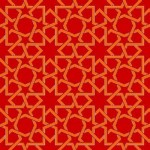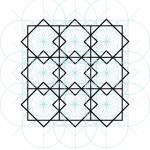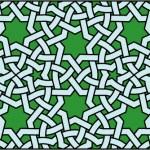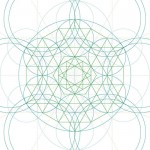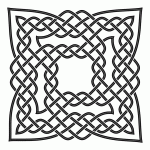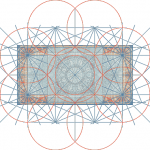Archive for the ‘Homework’ Category
Tuesday, June 29th, 2010
I know that some of you haven’t spent masses of time looking at Jesus. This is an opportunity for a bit of a research project.
It’s due in the penultimate week of term (the week before last).
Your task is to write a brief biography of Jesus, explaining the link between what he did and who Christians believe him to be. The handout with all the details you need is here.
Resources:
Basic introduction to Jesus’ life
BBC Religion – Life of Jesus
ReligionFacts.com – Life of Jesus
You can also use the New Steps in RE: Book One book, which has a whole chapter on the life of Jesus, as well as the other books around the classroom.
Tags: Jesus
Posted in Assessment, Homework, Lesson | 1 Comment »
Thursday, February 25th, 2010
Learning Objective: To write a newspaper article exploring the way law operates in different religions.
The point of this assessment is to see how well you can explain what different religions believe about law. Really good assessments will analyse and evalualte the ideas. For the assignment handout click here.
Marking:
This project will be marked on effort, understanding and independence. You will get raffle tickets for each category, and the winner of the raffle will get a prize! The more raffle tickets you get the better your chances!
You might want a bit more information about what the different religions believe, so look below.
Judaism:
Judaism 101 on Halakhah
ReligionFacts.com (quite complex).
MyJewishLearning.com
Islam:
BBC Religion
Buddhism:
Buddhism for Children – Search for “Karma” or “Precepts” on the page.
Christianity:
Christianity 101 – Grace
Christianity for Kids
This is quite a difficult topic, so please ask me if you want help.
Good luck! Remember that copying and pasting from Wikipedia proves nothing and won’t get you any marks!
Tags: Buddhism, Christianity, Islam, Judaism, Law
Posted in Assessment, Homework | Comments Off
Thursday, February 4th, 2010
Your task is to find out a little bit more about Sharia Law. Try to find out some information and put it in your own words…
A good place to start is the BBC Religion website.
Tags: Islam, Law, Sharia
Posted in Homework | Comments Off
Thursday, December 3rd, 2009
Use the handout to help you. If you’ve lost it you can pick up a copy here.
This work is due in on the last lesson of term. If it isn’t finished in time you’ll be expected to do it during the last lesson of term while the rest of us are watching a DVD.
There’s lots of information on this website:
Tags: Art, Religion
Posted in Assessment, Homework, Lesson | Comments Off
Thursday, December 3rd, 2009
Muslims do not like to make pictures of God because they believe that Allah is invisible and any pictures of him would not do justice to him.
However, they do use shapes and patterns to make art which represents different things.
Symbolic structure
Repeating patterns can represent the order Allah has put into the world, and can also represent the unchanging his laws.
Symbolic Shapes
In Islamic patterns many of the shapes have meanings:
- Circle – A symbol of Allah who has no beginning and no end. The centre can also be a symbol for Mecca, towards which Muslims face to pray.
- Triangle – A symbol for three aspects of human beings: body, mind and spirit.
- Square – The four elements of the world: earth, water, wind and fire.
- Hexagon – This can be created from six circles placed around a seventh. As seven is a perfect number, and circles are perfect the hexagon represents heaven.
- Star – Often represents the spread of Islam because the points of the star spread out from the middle. (Thanks Bisshu for reminding me about this)
Here are some examples, which you might be able to explain:
Tags: Islamic Art
Posted in Assessment, Homework, Lesson | 2 Comments »
Thursday, December 3rd, 2009
Jesus as a man from the Middle East (Israel). However, many people draw pictures of him as a person from another culture to show that Jesus is not just there for people from Israel – he is for everybody.
Have a look at some of the pictures from this website and use them to illustrate the point that Jesus is for everyone.
Of course, all of the pictures tell us different things about Jesus too. You will do even better if you can explain what else these pictures might say about Jesus. I have a little book explaining each one if you want to try this.
Tags: Art, Christianity, Jesus
Posted in Assessment, Homework, Lesson | Comments Off
Thursday, December 3rd, 2009
In this lesson we looked at several piece of art showing Jesus’ birth. In each we tried to identify how four key teachings came out:
- Jesus is fully human AND fully God.
- Jesus somehow reconnects human beings to God.
- Jesus, the “light of the world”, brings God’s peace.
- Jesus is the most important person ever to live.
The main picture we looked at was Botticelli’s Nativity:
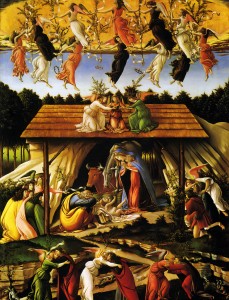
Do you remember the things we talked about? Your essay needs to try to explain what they mean:
- Jesus is right in the middle
- Jesus is naked
- Angels and human beings are hugging at the bottom
- A demon is running away in the bottom right
- Angels are coming down out of heaven
Here are some of the other pictures. Remember to ask yourself…
- Who or what is the main thing in the picture? How do you know it is the main thing?
- Where is the light coming from?
- What can we tell about the way the main characters are feeling? How can you tell? What is it trying to say?
- What is happening in the rest of the picture? What do these things tell you about the main bit?
Ghirlandaio’s Nativity:
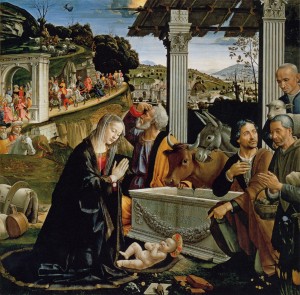
Previtali’s Nativity:
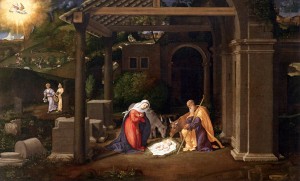
Rubens:
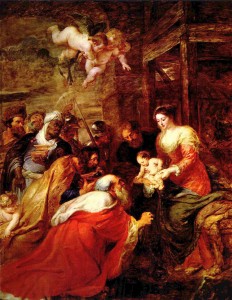
Tags: Art, Christianity, Nativity
Posted in Assessment, Homework, Lesson | 1 Comment »
Thursday, October 8th, 2009
You’ve started doing me a project on an aspect of religion that interests you. You may already have some information, but if not, please have a look at the links below and hopefully you’ll find something useful for your project.
- Religious Art: BBC Muslim Art, Wikipedia Islamic Art, Islamic calligraphy, Christian Art, or ask Mr Bigg to see “The Christ We Share”, which includes many different pictures of Jesus; Understanding Christianity 3, pp. 22-3. Make sure you look at a variety of religious art so you can do analysis.
- Ghosts and Life after death: BBC article; Ghost Village; New Steps in RE Book 3, Chapter 7; Discovery, Chapter 4; People and Their God, Chapter 8. Make sure you consider several points of view so you can do analysis.
- Religious War: See what you can find out about the Crusades using Google, or perhaps look at Muslim Fundamentalism. Perhaps ask Mr Bedford, as this is quite historical.
- Hindu Gods: There are lots of books in the classroom, or you could start by looking here. The main question to analyse is how there can be only one God, yet many Gods at the same time…
- Vietnamese Buddhism: Here’s a start. The thing to analyse is how Vietnamese Buddhism is different from other forms of Buddhism.
- Does God exist?: There are various ways to approach this one. See what you can find out about the argument from design (that the world is too complex to have happened by chance therefore there must be a designer (God), or look at the argument from experience that refers to people’s experience of God as proof God exists. Try here for a general introduction. Make sure you look at a view arguments and try to explore their strengths and weaknesses in your analysis.
- Christian Worship and Churches: There are loads of books that will help you out on this one, or try here, or have a look at La Sagrada Familia, one of the most famous modern Cathedrals. To do analysis here you need to think about how the design of a church reflects Christian beliefs. For really good analysis you could think about how different kinds of churches show different Christian beliefs…
- Religious Footballers: Here is a good start. See what else you can find on Google. To do good analysis on this you need to look at how the players’ religious faith affects their life and football.
- Stuff about Jesus: Come and see me on this one to be clear on what exactly you want to look at.
- Judaism: I know you’ve already done some fantastic work on this! What I’d love to see now is some writing to accompany it that shows some analysis. A key celebration each year is the Passover (or Pesach), and you could look at how this feast remembers the story of the Jews leaving Egypt. I’ll find you some books on this…
- The Four Noble Truths of Buddhism: Your first job is to find out about the Four Noble Truths and explain what they are. Next, perhaps you could analyse how they relate to other Buddhist ideas, or what these ideas mean for real Buddhists?
Tags: Th5
Posted in Homework, Lesson | Comments Off
Monday, September 21st, 2009
This week we are looking at how we can use rules for making ethical decisions.
You chose 5 rules of your own as the rules you would have if they were the only rules in the world. We then used thinking hats to help us consider our rules. The basic idea is that rules are a nice easy way to make ethical decisions. It is easy to know what is right and what is wrong when you have rules.
Unfortunately there are two problems with rules. Firstly, rules can multiply as people make new rules for every situation. Secondly, sometimes rules can be interpreted badly and don’t allow much flexibility depending on the situation.
For homework there were three questions to be answered on the back of the sheet.
Tags: Ethics, F3, M6, Rules, Th5
Posted in Homework, Lesson | Comments Off
Wednesday, September 9th, 2009
Today we looked at the story of Abi and Joe and thought about different ways of looking at their problems. You filled in a form that helped to identify some of the different ways of approaching ethics. We’ll look at them in a bit more detail in coming weeks…
For homework you need to answer the questions on the back of the sheet. If you finished it during the lesson then well done! No homework for you!
Tags: Ethics, F3, M6, Th5
Posted in Homework, Lesson | Comments Off
